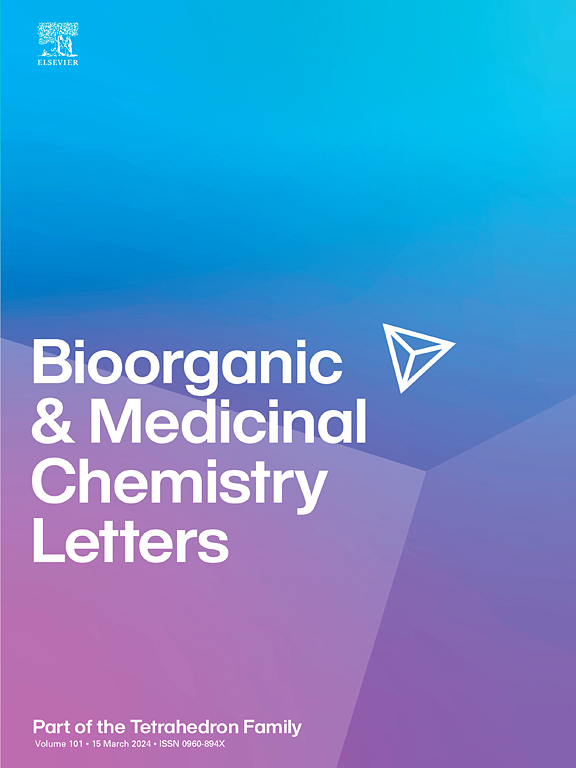Overcoming CK1α liability in the discovery of a series of isoIndolinone Glutarimides as selective IKZF2 molecular glue degraders
IF 2.5
4区 医学
Q3 CHEMISTRY, MEDICINAL
引用次数: 0
Abstract
IKZF2 (Ikaros Family Zinc Finger 2) is a transcription factor implicated in immune regulation and hematologic malignancies, where its dysregulation drives oncogenic programs, immune evasion, and therapy resistance. While targeted protein degradation (TPD) has emerged as a promising strategy, achieving selective IKZF2 degradation remains challenging due to off-target effects on structurally related neosubstrates such as IKZF1/3, SALL4, CK1α, and GSPT1. Here, we report the discovery of a novel series of isoindolinone glutarimide-based molecular glue degraders that selectively degrade IKZF2 while sparing CK1α and other neosubstrates. Through a structure-guided medicinal chemistry campaign, we identified divergent structure-activity relationships (SARs) enabling potent IKZF2 degradation with minimal off-target activity. The lead degrader (31) demonstrated high selectivity between IKZF2 and CK1α with acceptable oral bioavailability in mice. Our findings highlight the feasibility of developing precise IKZF2 degraders and provide a framework for optimizing selectivity in molecular glue design, offering a potential therapeutic strategy for IKZF2-dependent cancers.
2025 Elsevier Ltd. All rights reserved.

克服CK1α倾向性,发现一系列异吲哚酮戊二酰亚胺作为选择性IKZF2分子胶降解剂
IKZF2 (Ikaros家族锌指2)是一种涉及免疫调节和血液恶性肿瘤的转录因子,其失调驱动致癌程序、免疫逃避和治疗抵抗。虽然靶向蛋白降解(TPD)已成为一种有前景的策略,但由于IKZF2对结构相关的新底物(如IKZF1/3、SALL4、CK1α和GSPT1)的脱靶效应,实现选择性IKZF2降解仍然具有挑战性。在这里,我们报告了一系列新的基于异吲哚酮戊二酰亚胺的分子胶降解剂的发现,它们选择性地降解IKZF2,同时保留CK1α和其他新底物。通过结构导向的药物化学活动,我们确定了不同的结构-活性关系(SARs),能够以最小的脱靶活性有效地降解IKZF2。铅降解剂(31)在IKZF2和CK1α之间表现出高选择性,在小鼠体内具有良好的口服生物利用度。我们的研究结果强调了开发精确的IKZF2降解剂的可行性,并为优化分子胶设计的选择性提供了框架,为IKZF2依赖性癌症提供了潜在的治疗策略爱思唯尔有限公司版权所有。
本文章由计算机程序翻译,如有差异,请以英文原文为准。
求助全文
约1分钟内获得全文
求助全文
来源期刊
CiteScore
5.70
自引率
3.70%
发文量
463
审稿时长
27 days
期刊介绍:
Bioorganic & Medicinal Chemistry Letters presents preliminary experimental or theoretical research results of outstanding significance and timeliness on all aspects of science at the interface of chemistry and biology and on major advances in drug design and development. The journal publishes articles in the form of communications reporting experimental or theoretical results of special interest, and strives to provide maximum dissemination to a large, international audience.

 求助内容:
求助内容: 应助结果提醒方式:
应助结果提醒方式:


